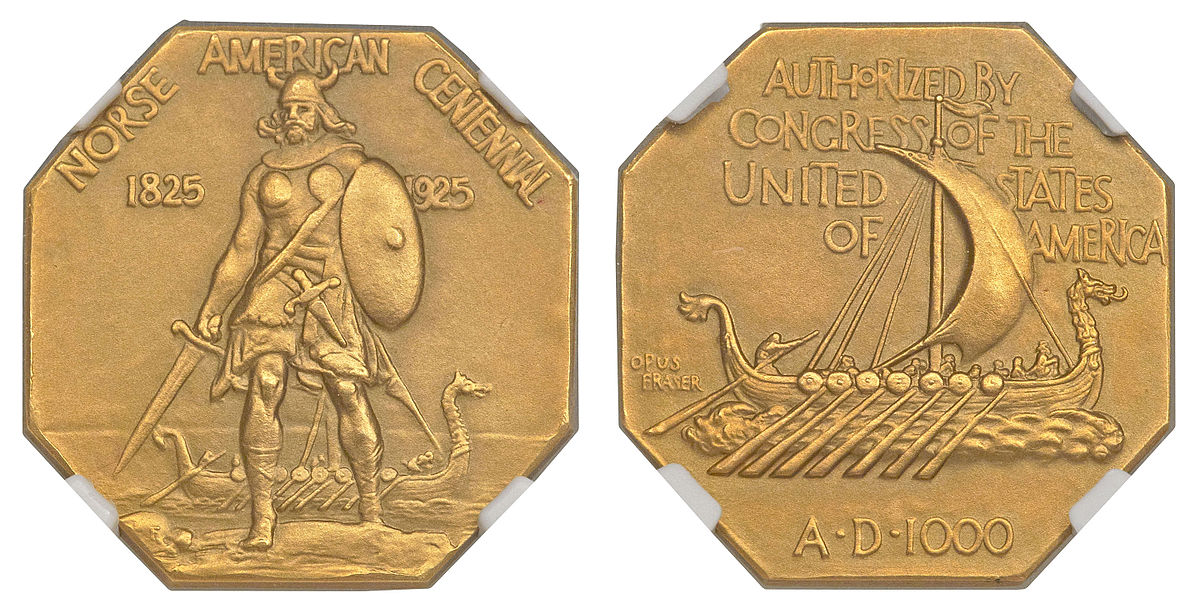
Valuing Immigrant Memories as Common Heritage
What is the public memory of Norwegian immigrants in America today? How has an immigrant group with attachment to Scandinavian roots affected a culturally diverse society in America? A new article provides answers.
In a new article, NIKU researcher Torgrim Sneve Guttormsen analyzes how a Scandinavian-American immigrant culture has influenced America through continued celebration and commemoration of the Viking Leif Erikson.
– In the latter half of the 19th century a memory culture associated with the Viking Leif Erikson grew forth in the United States. A protestant cultural elite and Scandinavian-Americans joined forces to promote Erikson as the first European to discover America, and in this process, they tied values like love for democracy and freedom, hard work and law and order to their supposed Viking ancestors, Guttormsen explains.
What started out as a way for people with Scandinavian ancestors or who associated themselves with a Scandinavian heritage to trace their “roots” back to the Viking voyages, has later evolved into nationwide commemoration practice.
– Through this memory culture, a Nordic culture has been “imported” in American heritage politics.
Guttormsen has used the study of the origin and reception of this memory culture as a mirror for reflections on contemporary issues about immigrant heritage.
The Boston Monument of “Leif the Discoverer”
In 1887 a monument was erected to honor the Viking and transatlantic seafarer Leif Erikson (ca. AD 970–1020) on Commonwealth Avenue in Boston, Massachusetts.
In his study, Guttormsen has done a biographical analysis of the monument, where he elaborates on the planning and erection of the monument as well as the reception of the commemoration of Erikson that this monument represents.
– This monument, and the Leif Erikson memory culture, was part of political struggles during the 19th and 20th century America. In the Boston area, Christopher Columbus personified the growing powers of the Catholic immigrants, like the Italians and the Irish, whilst his contester as Americas’ discoverer Erikson was seen by the Protestant elite to represent good Protestant values, Guttormsen says.
He points out that despite their connection to a specific immigrant group, Leif Erikson monuments can be considered a heritage value for the public good and as a societal resource.
Read the story in Norwegian at forskning.no


The US President still address Leif Erikson Day
In 1935 President Franklin D. Roosevelt designated October 9 as Leif Erikson Day in the United States. From 1964, the sitting US president has by request from Congress held an annual proclamation to observe Leif Erikson Day. This practice continues to this day.
October 9 is however not associated with any particular event in the Viking seafarer’s life. Rather, the date was chosen because it was on this date in 1825 that the first group of organized emigrants from Norway arrived in the US in the sloop Restauration.
– Norwegian Americans thereby succeeded in creating a firm link between the two dominant historical narratives in the Norwegian-American immigration memory culture – Leif Erikson and the Restauration – and also in gaining national recognition, Guttormsen explains.
Guttormsen has analyzed the Presidential Addresses held by Presidents Barack Obama and Donald J. Trump on Leif Erikson Day in 2016 and 2017 respectively:
– It is evident that a Viking heritage promoted by Nordic immigrant groups still partake in American heritage politics and in defining the national patriotic emblems of the United States, Guttormsen says.
Immigrant heritage and heritage politics
In his article, Guttormsen discusses the link between discovery myths, narratives about refugees at sea and immigrant memories. Through these connections, he suggests how the Leif Erikson monument can be made relevant to present-day society.
– The political uses of the past associated with Nordic immigrant groups can be linked to questions about immigrant and refugee heritage worldwide, and Nordic emigration mirrors immigrant heritage perspectives of those who have found a new home in Norway, Torgrim Sneve Guttormsen concludes.
Reference:
Guttormsen, T.S. : Valuing Immigrant Memories as Common Heritage: The Leif Erikson Monument in Boston. History and Memory 30, no. 2 (2018): 79-115. DOI: 10.2979/histmemo.30.2.04

